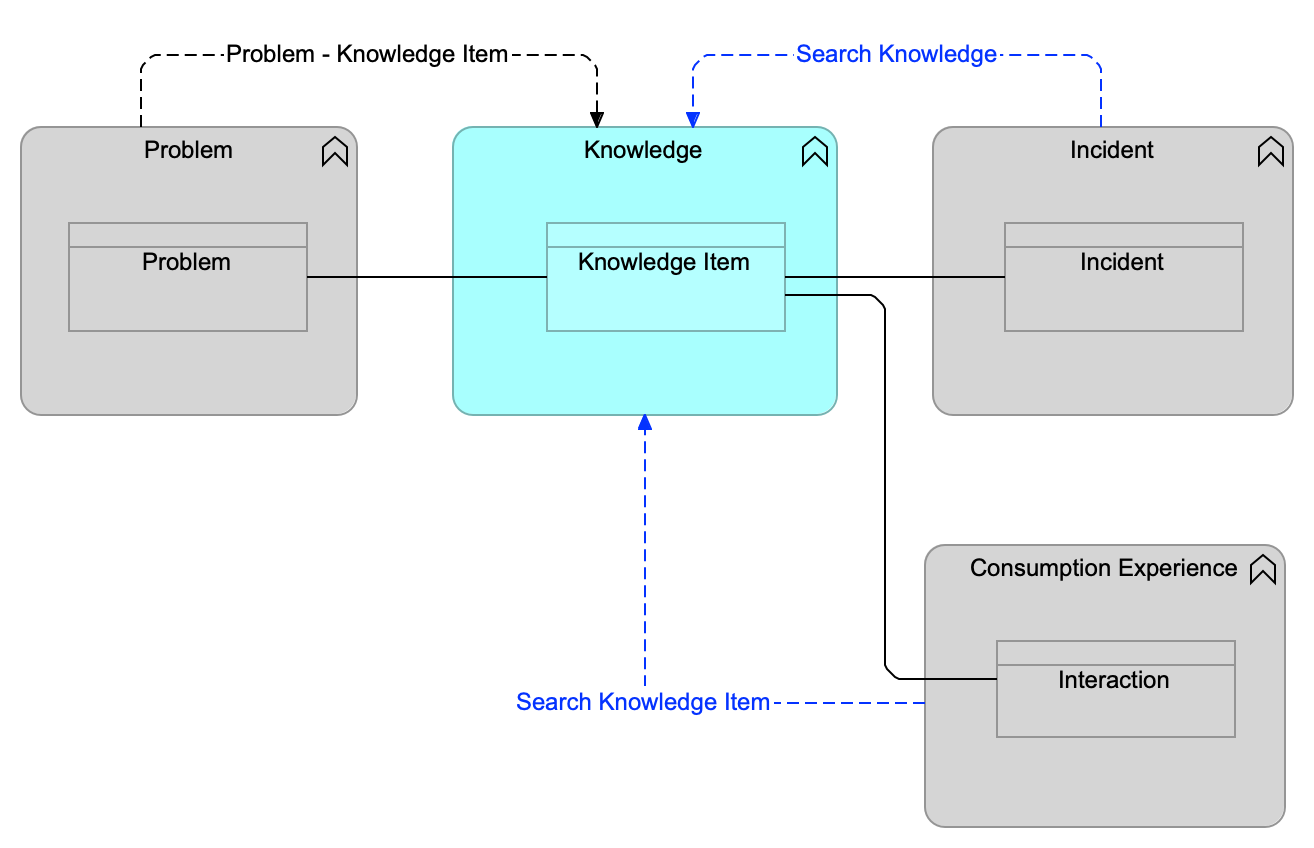Knowledge Functional Component

Purpose
The Knowledge functional component includes searchable content which can take on multiple formats; for example, general knowledge documents including how to, technical guidance, frequently asked questions, known errors, webinars, videos, training materials, or other information to be managed. The Knowledge functional component contains known errors which describe a known condition/issue which exists for a Product Instance. This functional component increases the contribution to knowledge by providing all users with the ability to generate new content. It improves the accessibility of knowledge in the organization by:
-
Supporting keyword search capabilities
-
Providing filter capabilities based on various attributes of the Knowledge functional component, such as subject category, time range, source types (internal versus external)
-
Supporting natural language queries to reduce the complexity of finding relevant information
-
Providing users with access to third-party knowledge and forums
-
Providing natural language processing analytics so, for example, “trending topics” can be reported from service desk interactions
-
Reducing the number of requests for information/knowledge that arrive at the service desk; service consumers and staff consume third-party knowledge through the same experience as the formal and informal forms of knowledge the company provides
The Knowledge functional component supports the value streams:
Functional Criteria
The Knowledge functional component:
-
Shall be the system of record for all Knowledge Item records
-
Shall manage the state and lifecycle of the Knowledge Item
-
Shall receive known error information from the Problem to create a Knowledge Item
-
Shall provide functionality to enable the service consumers and staff to rank Knowledge Items, thus improving future knowledge consumption
-
Shall provide knowledge in the form of content that helps to address the needs of both service consumers and digital operations
-
Shall increase the contribution to knowledge by providing all users with the ability to generate new content
-
Shall provide knowledge to digital operations as part of the diagnostics and remediation activities
-
Shall reduce the number of requests for information/knowledge that arrive at the service desk through self-service
-
May aggregate multiple (internal and external) Knowledge Item sources
-
May include searchable content which can be structured IT/supplier-produced articles
-
May share knowledge with consumers via the Consumption Experience engagement portal
-
May improve accessibility of knowledge in the organization by:
-
Supporting keyword search capabilities
-
Providing filter capabilities based on various attributes of the Knowledge functional component, such as subject category, time range, source types (internal versus external)
-
Supporting natural language queries to reduce the complexity of finding relevant information
-
Providing users with access to third-party knowledge and forums
-
Providing natural language processing analytics so, for example, “trending topics” can be reported from service desk interactions
-
-
May allow service consumers and staff to consume third-party knowledge through the same experience as the formal and informal forms of knowledge the company provides